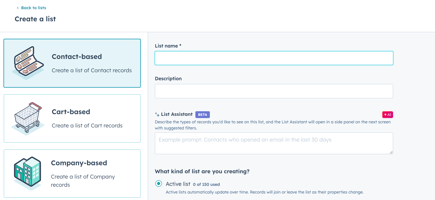In today's digital-first business landscape, having the right marketing technology stack is crucial...
Email Marketing Best Practices Part 4: Nurture Campaigns and Lifecycle Marketing
Nurture campaigns and lifecycle marketing are essential strategies for guiding prospects through the buyer's journey and maintaining long-term relationships with customers. This section will cover how to define customer lifecycle stages, create targeted nurture campaigns, and personalize content based on user behavior and preferences.
Defining Customer Lifecycle Stages
Understanding the customer lifecycle is crucial for creating targeted, relevant content. Here are the typical stages:
- Awareness: The prospect becomes aware of your brand or solution.
- Consideration: The prospect is actively researching solutions and comparing options.
- Decision: The prospect is ready to make a purchase decision.
- Retention: The customer has made a purchase and is using your product or service.
- Advocacy: The satisfied customer becomes a brand advocate, referring others to your business.
Each stage requires different types of content and messaging to move the prospect or customer to the next stage.
Creating Targeted Nurture Campaigns
Nurture campaigns are designed to provide value and build relationships with prospects and customers at each stage of their journey. Here's how to create effective nurture campaigns:
- Map Content to Lifecycle Stages:
- Awareness: Educational content, industry reports, how-to guides
- Consideration: Product comparisons, case studies, webinars
- Decision: Free trials, demos, consultations, special offers
- Retention: Onboarding series, usage tips, feature updates
- Advocacy: Exclusive content, early access to new features, referral programs
- Set Clear Goals: Define what you want to achieve with each campaign (e.g., move prospects to the next stage, increase product usage, encourage renewals).
- Determine Campaign Length and Frequency:
- Consider the complexity of your product and typical sales cycle
- Balance between staying top-of-mind and avoiding overwhelm
- Create a Logical Flow:
- Start with broad topics and gradually narrow down to more specific, product-focused content
- Ensure each email builds on the previous one
- Use Behavioral Triggers:
- Set up automated emails based on specific actions (e.g., downloading a whitepaper, attending a webinar)
- Use lack of engagement as a trigger for re-engagement campaigns
- Incorporate Multi-Channel Touchpoints:
- Complement email nurtures with retargeting ads, social media content, and direct mail for a cohesive experience
- Measure and Optimize:
- Track key metrics like open rates, click-through rates, and conversions
- A/B test different elements to improve performance
Example of a B2B SaaS Nurture Campaign:
- Email 1: Welcome and industry trend report
- Email 2: Case study showcasing a customer success story
- Email 3: Webinar invitation on solving a key industry challenge
- Email 4: Comparison guide of different solutions
- Email 5: Free trial offer with personalized demo
Personalizing Content Based on User Behavior and Preferences
Personalization can significantly improve the effectiveness of your email campaigns. Here are strategies to implement personalization:
- Use Behavioral Data:
- Track website visits, product usage, and past purchases
- Tailor content based on specific pages viewed or products of interest
- Leverage Demographic Information:
- Segment your list based on factors like industry, company size, or job title
- Customize messaging and offers to resonate with each segment
- Implement Dynamic Content:
- Use email marketing platforms that allow content to change based on subscriber data
- Show different images, product recommendations, or CTAs based on subscriber preferences
- Personalize Send Times:
- Analyze when each subscriber is most likely to engage with emails
- Use AI-powered send time optimization features in your email marketing tool
- Create Preference Centers:
- Allow subscribers to choose the types of content they want to receive
- Use this information to send highly relevant emails
- Use Progressive Profiling:
- Gradually collect more information about subscribers over time
- Use this data to increase personalization in future campaigns
- Implement Predictive Personalization:
- Use AI and machine learning to predict what content or products a subscriber is most likely to be interested in
- Automatically tailor email content based on these predictions
- Personalize Based on Lifecycle Stage:
- Adjust messaging and offers based on where the subscriber is in their journey with your brand
Example of Personalized Email Content:
- Subject: "[First Name], we found some [Industry] resources just for you"
- Body: Dynamic content blocks showing different resources based on past engagement
- CTA: Personalized next step based on the subscriber's lifecycle stage
By implementing these nurture campaign and personalization strategies, you can create more engaging, relevant email experiences that guide prospects through their buyer's journey and foster long-term customer relationships. Remember to continuously test and refine your approaches based on performance data and customer feedback.
Email Marketing Best Practices Complete Guide
Email Marketing Best Practices Part 1: Technical Setup |
Read More |
Email Marketing Best Practices Part 2: Building and Managing Your Email List |
Read More |
Email Marketing Best Practices Part 3: Content Creation and Strategy |
Read More |
Email Marketing Best Practices Part 4: Nurture Campaigns and Lifecycle Marketing |
Read More |
Email Marketing Best Practices Part 5: Lead Magnets and List Growth |
Read More |
Email Marketing Best Practices Part 6: Email Automation and Workflows |
Read More |
Email Marketing Best Practices Part 7: Metrics and Analytics |
Read More |
Email Marketing Best Practices Part 8: Compliance and Best Practices |
Read More |
Need help with your email setup? Connect with us today for a free consultation.


